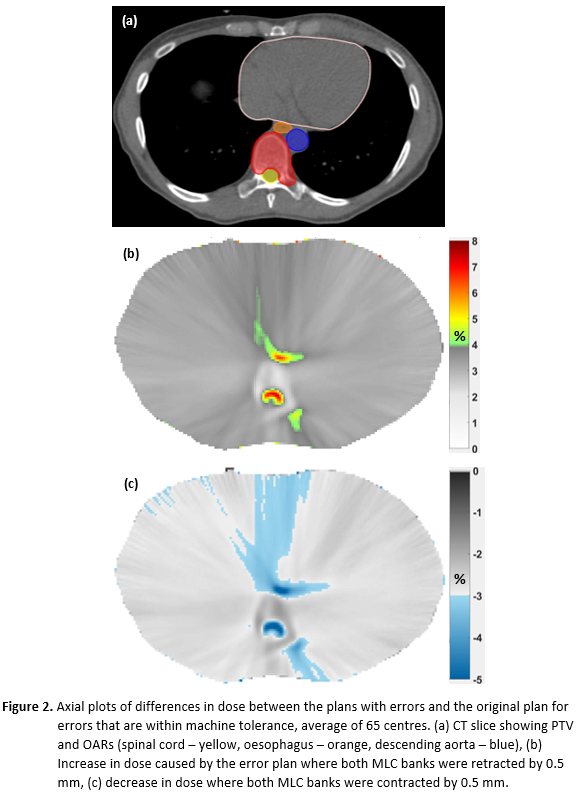Robustness of spine SBRT to sub tolerance MLC errors – a large scale evaluation
Mohammad Hussein,
United Kingdom
OC-0619
Abstract
Robustness of spine SBRT to sub tolerance MLC errors – a large scale evaluation
Authors: Mohammad Hussein1, Nick Hardcastle2, Joerg Lehmann3, Catharine Clark4,1
1National Physical Laboratory, Metrology for Medical Physics, Teddington, United Kingdom; 2Peter MacCallum Cancer Centre, Physical Sciences, Melbourne, Australia; 3Calvary Mater Newcastle, Radiation Oncology, Newcastle, Australia; 4University College London Hospitals, Medical Physics, London, United Kingdom
Show Affiliations
Hide Affiliations
Purpose or Objective
The narrow trade-off between delivering a highly localised dose while sparing critical structures presents a challenge in the planning and delivery of spine SBRT. Consequently, small, sub-tolerance MLC delivery errors may cause unseen large dose deviations. The aim of this study was to perform a large-scale systematic evaluation of the sensitivity of spine SBRT plans to subtle, within-machine tolerance, MLC errors and to better understand the robustness of these plans to such plans using a multi-centre plan challenge dataset.
Material and Methods
Data for 65 Varian Eclipse TPS users from an international spine SBRT plan challenge was used. All plans were created on the same CT and RT structure set, with the same target and OAR constraints, using each centre’s respective planning technique on Varian linacs (Clinac and TrueBeam). 33 had the Millennium MLC (MMLC, minimum 5mm leaf width) and 32 High-Definition (HDMLC, min 2.5mm leaf width). The DICOM plan file for each centre was extracted and MATLAB code was used to introduce errors where both MLC banks were retracted or contracted by 0.1, 0.2, 0.3, 0.4 and 0.5mm, respectively, leading to 10 error scenarios. The original and error plans were imported into RayStation v11B for dose calculation using reference beam data. For all plans, the near-max spinal cord dose (D0.03cc,SC) and dose to 90% of PTV (D90,PTV) were calculated. To assess impact of the individual errors, the changes in D0.03cc,SC and D90,PTV in the error plans versus in the unedited plan were evaluated. Dose difference maps between dose distributions of all error plans and the unedited plan were calculated for all 65 centres. An average of the difference maps (ΔDmap) for all centres was calculated to visually highlight regions consistently impacted by the error.
Results
Histograms showing increased D0.03cc,SC due to MLC retraction errors, and decreased in D90,PTV due to MLC contraction are shown for all centres (Fig 1). The dosimetric impact and its spread increase with error , with as low as 0.3mm retraction error causing >5% increase in D0.03cc,SC for some centres. Difference in the mean of each HDMLC and MMLC histogram pair was <0.5%. The ΔDmap for 0.5mm retraction and contraction errors respectively show the impact is mainly clustered around the boundary between critical OARs and PTV (Fig 2).


Conclusion
This large-scale data analysis, where all centres planned on the same dataset and planning goals, shows that subtle MLC errors can cause large dosimetric impact in spine SBRT cases. The of the impact varies between centres, the type of MLC is not a significant factor, and is clustered at the boundary between OAR and PTV. This indicates that the challenging trade-offs encountered in spine SBRT are sensitive to minor MLC errors which are well within machine tolerance. These findings indicate that the variations in impact are potentially due to plan optimisation approaches and highlight the need to carefully consider these delivery errors as part of plan robustness approaches.